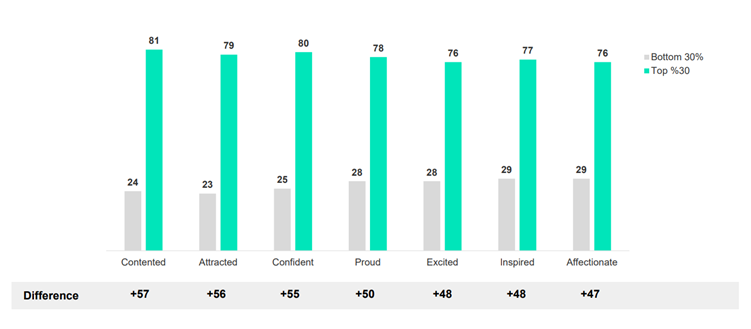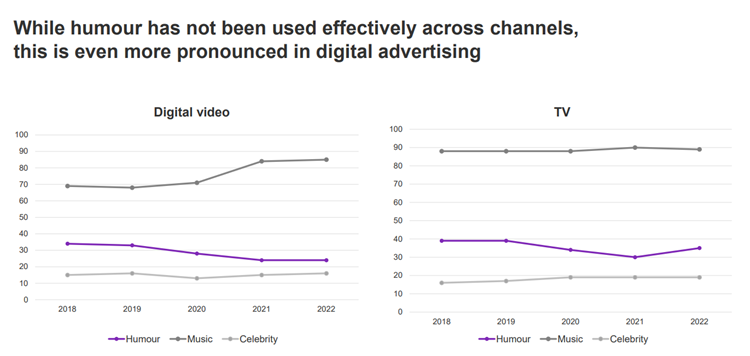New analysis from Kantar, the world’s leading data and analytics company, and Emotion AI pioneer, Affectiva, a Smart Eye company, finds digital ads that generate strong emotions in consumers are four times more impactful.
Using Affectiva’s Emotion AI facial coding, the research measured consumers’ emotional responses to digital ads in Kantar’s ad testing database to uncover how marketers can optimize creative assets to power impactful digital campaigns.
Attention’s not enough
The study shows that the industry metrics widely used to measure online ads, like clickthrough and completion rates, have little correlation with the campaign’s success or brand impact, and measures such as facial expressiveness - which indicate a degree of emotional or cognitive engagement with the content - are far better predictors.
Furthermore, digital ads that elicit strong emotions are four times more likely to generate impact than those with weaker emotional connections (they are also 2.6 times more likely to go viral and 4 times more powerful in driving long-term brand equity).

Humor and positivity are key
Kantar identified the top and bottom 30% of the digital ads in its Link database in terms of their likelihood to contribute to brand equity in the long term, using Link’s ’Demand Power score’ metric. This revealed that the digital ads that build brand equity most effectively are those that trigger more emotional experiences – of all kinds. However, the best performers leave viewers with overall positive feelings like pride, contentment, and attraction, while low-performing ads are associated with negative feelings such as being unimpressed, annoyed and disappointed.

The study finds that humor, in particular, is under-utilized in digital advertising. While the long-term decline in the use of humor in advertising has been consistent across channels, it is even more pronounced in online ads. Though humor has mounted a comeback in TV advertising in recent years, there is little sign of that trend being mirrored in digital advertising (see below). This is key because humor is the main way to prevent viewers from skipping ads; it was the top reason in 30 of 42 countries studied in Kantar’s AdReactions survey.

An example of a creative execution which successfully utilizes emotion is “It’s not you, it’s the tee” – a TikTok ad for t-shirt brand True Classic, which sparked intrigue from the start, but left viewers smiling at the end.
Commenting on the findings, Ecem Erdem, Global Thought Leader – Creative at Kantar, said: “With marketing budgets under increasing pressure, it is more important than ever to ensure that precious investment will make an impact. Digital advertising is a cornerstone for the marketing mix – our research shows that marketers plan to invest more in digital channels over the coming year. As digital advertising matures, it’s time that advertisers treat it as an important brand-building channel as well as a transactional one – and leverage emotions and human stories to deliver the most impact.”
Graham Page, Global Managing Director of Media Analytics at Affectiva, added: “Advertisers are increasingly focusing on measuring the attention audiences give to digital ads. However, attention is necessary but insufficient for advertising effectiveness. Campaigns that are truly effective go beyond this to actively engage viewers emotionally. Understanding the potential for campaigns to connect with viewers on a deeper level before they air is crucial to maximize return on investment – and to create ads people love and live longer in the memory. Emotion AI tools have become an essential part of the campaign development process and enable advertisers to build that necessary emotional connection with their audiences”
Watch “Harness the power of emotion in digital advertising” webinar to find out more about the findings of the research and for more case studies of real-world digital advertising.